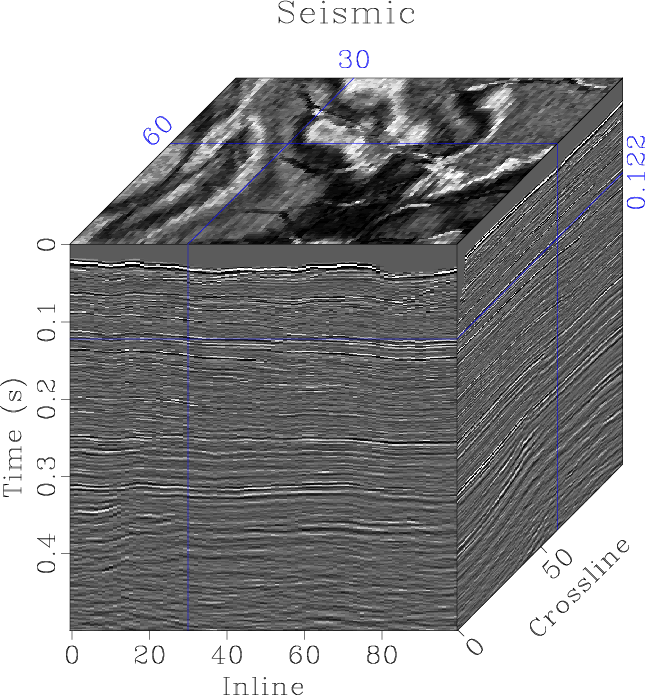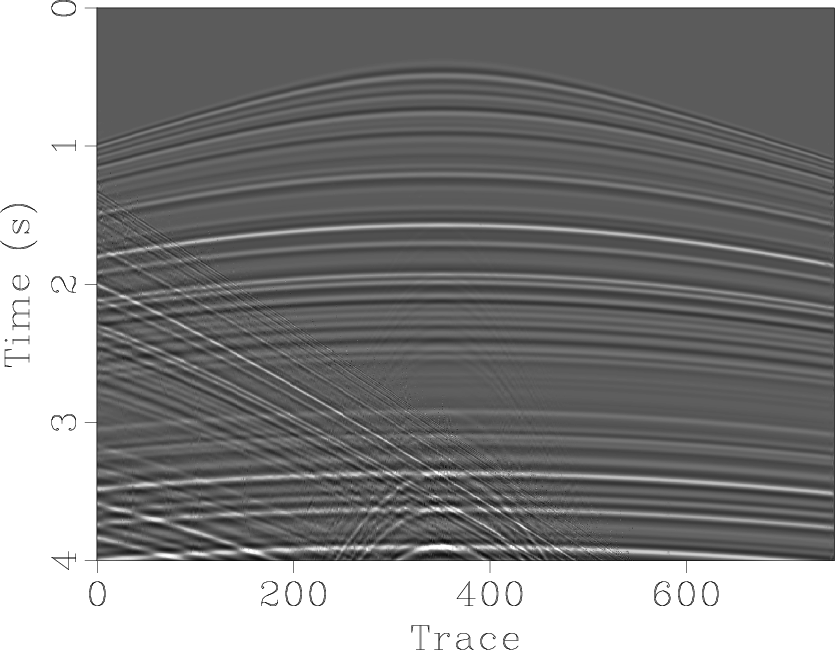The example in rsf/tutorials/slicing reproduces the tutorial from Evan Bianco of simple data slicing.



See also:
Madagascar users are encouraged to try improving the results.
August 20, 2014 Examples No comments
The example in rsf/tutorials/slicing reproduces the tutorial from Evan Bianco of simple data slicing.



See also:
Madagascar users are encouraged to try improving the results.
August 20, 2014 Documentation No comments
A new paper is added to the collection of reproducible documents:
Iterative deblending of simultaneous-source seismic data using seislet-domain shaping regularization


We introduce a novel iterative estimation scheme for separation of blended seismic data from simultaneous sources. The scheme is based on an augmented estimation problem, which can be solved by iteratively constraining the deblended data using shaping regularization in the seislet domain. We formulate the forward modeling operator in the common receiver domain, where two sources are assumed to be blended using a random time-shift dithering approach. The nonlinear shaping-regularization framework offers some freedom in designing a shaping operator to constrain the model in an underdetermined inverse problem. We design the backward operator and the shaping operator for the shaping regularization framework. The backward operator can be optimally chosen as a half of the identity operator in the two-source case, and the shaping operator can be chosen as coherency-promoting operator. Three numerically blended synthetic datasets and one numerically blended field dataset demonstrate the high-performance deblending effect of the proposed iterative framework. Compared with alternative f-k domain thresholding and f-x predictive filtering, seislet-domain soft thresholding exhibits the most robust behavior.
August 5, 2014 Celebration No comments
“Working workshops” as opposed to “talking workshops” are meetings where the participants work together (possibly divided into pairs or small teams) to develop new software code or to conduct computational experiments addressing a particular problem. Working workshops are a cross between scientific workshops and coding sprints or hackathons common among open-source software communities.

26 participants from 11 different organizations gathered at Rice University at the end of July and beginning of August for the Second Madagascar Working Workshop, hosted by The Rice Inversion Project. The topic of the workshop was parallel high-performance computing. The participants divided into teams of 2-3 people by pairing experienced Madagascar developers with novice users. Each team worked on a small project, creating examples of parallel computing or improving general-purpose tools such as sfmpi, sfomp, and (newly created) sfbatch.

The participants used Stampede, the world’s seventh most powerful supercomputer, provided by the Texas Advanced Computing Center, for their computational experiments.
August 3, 2014 Programs No comments
sfstolt implements zero-offset (post-stack) seismic migration using Stolt method.
Stolt migration is described in the classic paper
Stolt, R. H., 1978, Migration by Fourier transform: Geophysics, 43, 23-48.
The following example from gallery/french/stolt shows the result of Stolt migration in the French model:

The classic Stolt migration works for constant velocity. However, it can be extended to the case of V(z) by using Stolt stretch and cascaded migrations. See Evaluating the Stolt-stretch parameter and its references, including
Beasley, C., W. Lynn, K. Larner, and H. Nguyen, 1988, Cascaded frequency-wavenumber migration – Removing the restrictions on depth-varying velocity: Geophysics, 53, 881-893.
The following example from sep/stoltst/elfst compares the results of Stolt migration with Stolt stretch, phase-shift migration, and cascaded Stolt migration with Stolt stretch.

sfstolt2 is another version of Stolt migration, with a control on interpolation accuracy. The following example from sep/forwd/stolt compares results from two different interpolations:
